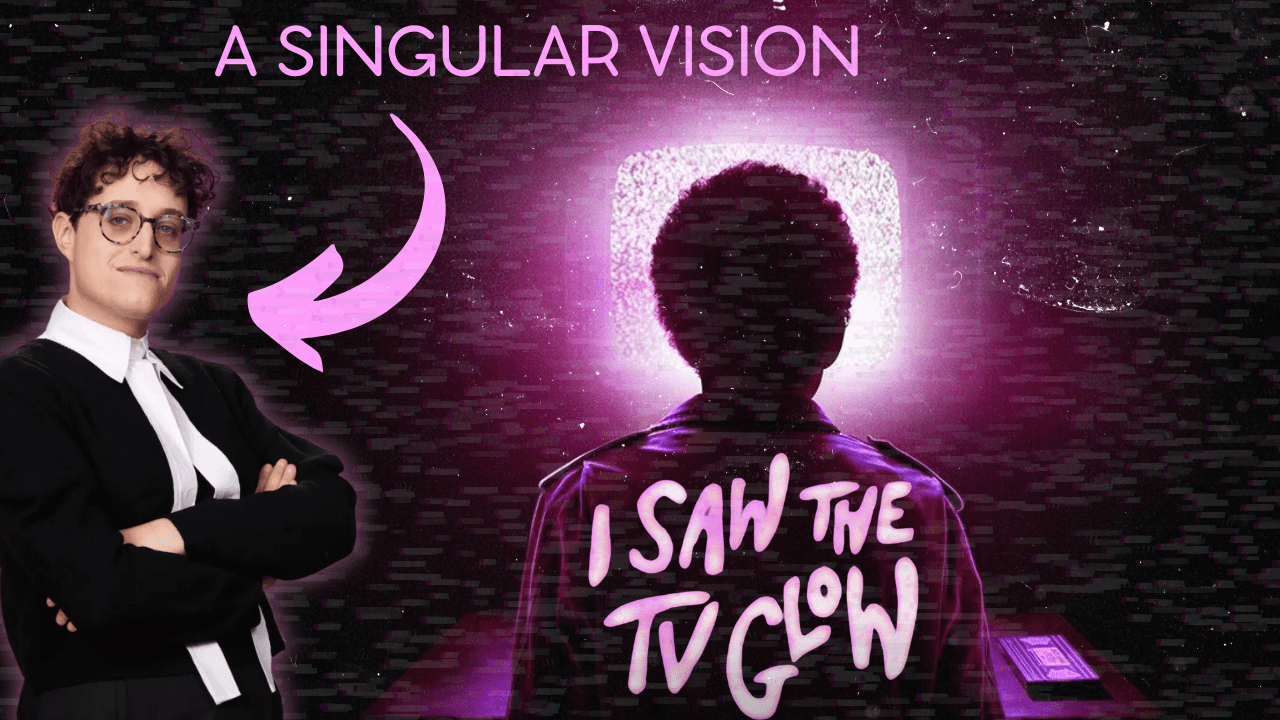I Saw the TV Glow Film Review
I Saw the TV Glow was the buzziest film at Sundance this year, and it’s finally out in theaters. However, it’s probably not going to be for everyone. Full I Saw the TV Glow Film Review in the Video Below
Background
I Saw the TV Glow is the second feature film from director Jane Schoenbrun. They exploded onto the indie scene in 2021 with We’re All Going to the World’s Fair, a low-budget, creepypasta-style production that garnered tremendous critical acclaim, even if it didn’t resonate as strongly with general audiences. In that film, Schoenbrun’s unique vision and style were clear, and they’ve carried that singular voice into I Saw the TV Glow, this time with a larger budget backed by A24.
What It’s About
This film is a lot of things: a story about wanting to be loved and accepted, about feeling disconnected from your own body, about sensing something is wrong but being unable to pinpoint it. It’s also about escaping through movies and, specifically, through television. The best way to approach I Saw the TV Glow is through a queer lens and an allegorical interpretation. Jane Schoenbrun is non-binary and uses they/them pronouns, and the film serves as an allegory for gender identity and gender dysphoria.
The film follows our central character Owen as he learns about a television show called “The Pink Opaque” from his high school acquaintance, Maddie. Together, they watch the show and begin to see themselves in the characters, who are played by two women. The narrative includes clear nods to television shows of the 80s and 90s, most notably “Buffy the Vampire Slayer.” This fictional show within the film mirrors the style and impact of such series, with cheesy yet effective villains and a strong female lead battling demons, both literal and metaphorical.
Surrealism and Allegory
Schoenbrun draws inspiration from shows like “Twin Peaks,” and the film’s surrealism and eerie tone reflect this. This is not a movie where audiences should try to decipher what is real and what isn’t. The film requires viewers to suspend their disbelief and embrace its open-ended narrative. It’s primarily an allegory, meant to evoke the confusion and conflict inherent in personal experiences, particularly those related to gender identity.
The special effects aren’t hyper-realistic, but this is intentional. The film’s style and narrative wouldn’t benefit from overly polished effects. Instead, the slightly low-fi aesthetic adds to the film’s surreal and introspective atmosphere.
Suburban Hell and Personal Struggles
Beyond the individual struggles of Owen and Maddie, the film also depicts a generalized sense of suburban hell, where every house looks identical, symbolizing the pressure to conform to societal norms. This broader thematic exploration reflects the difficulty of finding one’s path in a world that often demands conformity.
Despite the larger budget, I Saw the TV Glow retains some of the low-fi qualities seen in We’re All Going to the World’s Fair. The film remains grounded in the characters and their experiences, ensuring that the production values do not overshadow the narrative.
Love it or Hate it
I Saw the TV Glow is not for everyone. Some viewers might leave the theater thinking, “What did I just watch?” and that’s okay. Schoenbrun has created a personal film that will resonate deeply with some viewers, perhaps more than most films they’ve seen. Others might hate it or simply not get it, and that’s fine too. The film’s existence in a market dominated by blockbuster franchises and remakes is a testament to the importance of diverse, independent voices in cinema.
Getting Made
A significant note about the film’s production is the involvement of Emma (Emily) Stone, who backed Schoenbrun’s vision. Filmmakers like David Lowery have also supported Schoenbrun, highlighting the importance of established voices propping up emerging filmmakers.
Final Thoughts
Regardless of your ultimate opinion, I Saw the TV Glow is worth a watch if you’re open to unconventional, introspective cinema. If you find the themes and style I’ve described intriguing, give it a try. If not, it might be best to give this one a pass.
More Videos HERE
Full Written Reviews HERE




